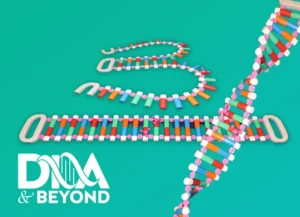Epigenetics is a dynamic and rapidly expanding field within biology that is transforming our understanding of heredity, gene expression, and cellular function. The term “epigenetics,” derived from the Greek prefix epi, meaning “above” or “on top of,” aptly describes a system of heritable changes in gene function that occur without altering the underlying DNA sequence. This concept challenges the traditional view of DNA as the sole determinant of an organism’s traits, revealing a complex interplay of molecular mechanisms that regulate gene activity. DNA methylation is a key epigenetic mechanism.
At the core of epigenetics lies the intricate world of chemical tags and protein complexes that decorate DNA and its associated proteins. As highlighted by the National Institutes of Health, these modifications include the direct methylation of DNA itself, as well as a diverse array of chemical tags attached to histone proteins. DNA methylation, the addition of a methyl group to the DNA molecule, typically at the cytosine base within a CpG dinucleotide, is a major focus of epigenetic research. This process is catalyzed by enzymes called DNA methyltransferases (DNMTs).1 Histones, which serve as spools around which DNA is wound, are also subject to methylation, acetylation, and phosphorylation. Furthermore, larger proteins like ubiquitin and SUMO can also modify histones, creating a sophisticated regulatory landscape. These modifications, often referred to as “epigenetic marks,” act as molecular switches, influencing how genes are expressed. DNA methylation generally leads to gene silencing, while histone modifications can either enhance or suppress gene transcription, effectively controlling the accessibility of DNA to the cellular machinery responsible for reading and interpreting the genetic code.2
Laura Elnitski’s analogy of epigenetic marks as “accent marks” on the DNA “language” provides a helpful way to visualize this concept. In the context of DNA methylation, the presence of methyl groups can be seen as a strong accent mark that often silences the gene, preventing it from being transcribed. Just as accents alter the pronunciation and meaning of words, epigenetic modifications, particularly DNA methylation, alter gene expression, ultimately shaping cellular identity and function. Different cell types possess distinct epigenetic patterns, including patterns of DNA methylation, reflecting their specialized roles within the organism.3 This explains how cells with the same underlying DNA can exhibit vastly different characteristics.
For a more comprehensive introduction to this field, see “The Mysterious Epigenome: What Lies Beyond DNA,” by James Gills and Thomas Woodward.
The implications of epigenetics are far-reaching. One of the most significant areas of research is in cancer biology. As Elnitski points out, DNA methylation patterns are often disrupted in cancer cells. In normal cells, DNA methylation plays a crucial role in regulating cell growth and division. However, in cancer cells, aberrant methylation patterns, such as hypermethylation (increased methylation) of tumor suppressor genes and hypomethylation (decreased methylation) of oncogenes, can contribute to tumor development and progression.4 Understanding these aberrant patterns may provide valuable insights into tumor development and progression, potentially leading to the development of novel diagnostic and therapeutic strategies. By comparing the methylation patterns of normal cells with those of tumor cells, researchers can identify key genes that are affected by epigenetic changes and explore new avenues for targeted interventions.
Thus, epigenetics, and particularly DNA methylation, reveals a new layer of complexity in the central dogma of molecular biology. It demonstrates that the DNA sequence is not the only source of biological information; the way that sequence is interpreted and utilized, through mechanisms like DNA methylation, is also critically important. This emerging field continues to expand, promising to revolutionize our understanding of development, disease, and the interplay between genes and the environment.
References
- Jones, P. A. & Baylin, S. B. The fundamental role of epigenetics in cancer. Nature Reviews Cancer, 2(8), 587–599 (2002).
- Robertson, K. D. DNA methylation and human disease. Nature Reviews Genetics, 6(8), 597–610 (2005).
- Allis, C. D., Jenuwein, T., Reinberg, D. & Caparros, M. Epigenetics. Cold Spring Harbor Laboratory Press (2007).
- Wolffe, A. P. & Matzke, M. A. Epigenetics: regulation through the chromatin landscape. Science, 286(5439), 481–486 (1999).


